How to fit a fertiliser kit to a John Deere drill
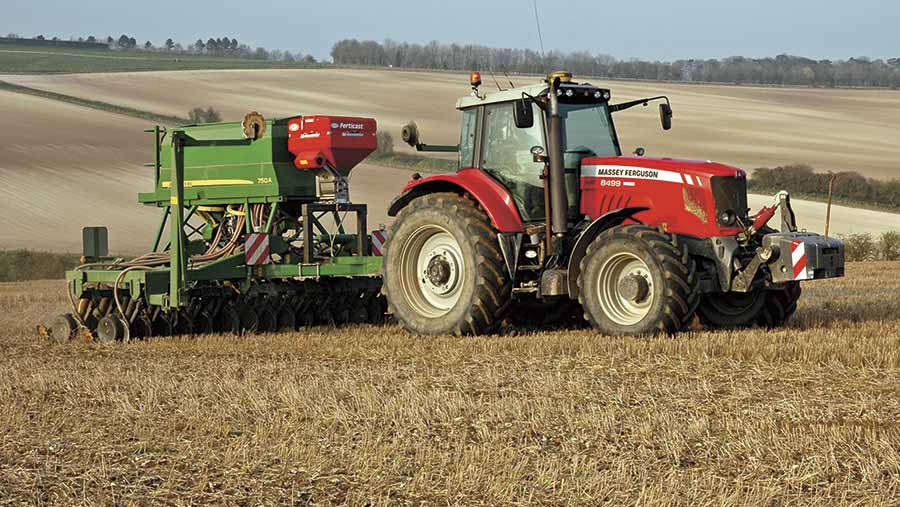 © Nick Fone
© Nick Fone John Deere’s 750A drill is recognised as being one of the longest-serving no-till seeders used in Europe today.
Other smaller manufacturers from around the globe are working hard to grab their share of what is a rapidly growing market, but in overall numbers, the Green Giant’s flagship direct drill is a definite favourite.
Renowned for being shy about how many machines it produces in its vast portfolio of products, the company makes an exception with its drill, proudly stating on its website that more than two million of its single-disc openers have been sold worldwide in the past 15 years.
See also: Farmer gets 12m drill and Case IH Quadtrac for just £85,000
While there will be much debate over the intricate pluses and minuses of the 750A’s disc coulters among no-till die-hards, the single biggest area where the JD drill falls down is the lack of a means of applying fertiliser or other granular products while sowing.
After two seasons of running a 750A, Wiltshire grower Ian Warman was convinced that direct-drilled crops would benefit from some sort of system to apply seedbed fertiliser – liquid or granular.
“Having made a gradual transition across to direct-drilling with some crops still established conventionally initially, I could see that those that went into a cultivated seed-bed seemed to get away a bit better,” he says.
“It seemed likely that they were benefitting from the mineralisation of nitrogen that the surface disturbance generated – something the no-till crops didn’t get. I felt there would be a definite advantage in putting on a seed-bed fertiliser, but the 750A had no means of applying it.”
Umostart in a nutshell
- 12% N, 46% P, 2% Zn
- Placed directly in the rooting zone promotes vigorous early seedling growth to counter adverse conditions – for example, CSFB in OSR
- Applied at 15kg/ha to OSR in autumn or 15kg/ha to spring cereals (following RB209 guidelines)
- Cost of about £3/kg
Having explored his options, he concluded that with more than 400ha of drilling to do each year, the capital cost of at least £12,000 for a liquid fertiliser kit would be difficult to justify.
A conventional seed-bed fertiliser (such as DAP or TSP) would have to go on at fairly high rates, requiring a large hopper – probably a front tank – and the associated pipework, metering and distribution system would make for a fairly cumbersome and complex set-up. So another solution had to be found.
Ferticast applicator
ProCam agronomist Peter Lowth, who over the past 20 years he has been involved in various trials looking at the effects of using starter fertilisers on various crops, provided Mr Warman with the answer.
One particular product – Umostart – is a compound of ammonium nitrate, phosphate and zinc and can be used at relatively low rates because of the initial availability of the P element.
“With 12% N, 46% P and 2% zinc, Umostart might not seem that far removed from other seed-bed fertilisers, but it is the fact that the phosphate is 98% available from the word go that makes the difference,” says Mr Lowth.
“That means it only needs to go on at 15kg/ha – equivalent to one-tenth of the quantity of seed in, for example, a spring barley crop.
“At such low rates a big front tank or split hopper isn’t required and a seeder/slug pelleter-type machine becomes an option.”
On that basis Mr Warman set out to find just such a unit. He managed to track down an ex-demo Opico Ferticast applicator – a version of the type of machine you might normally see used as a seeder or slug-pelleter on a subsoiler or a set of rolls – for just over £4,000.
He then set about grafting it on to his John Deere 750A drill. We followed him through the process:
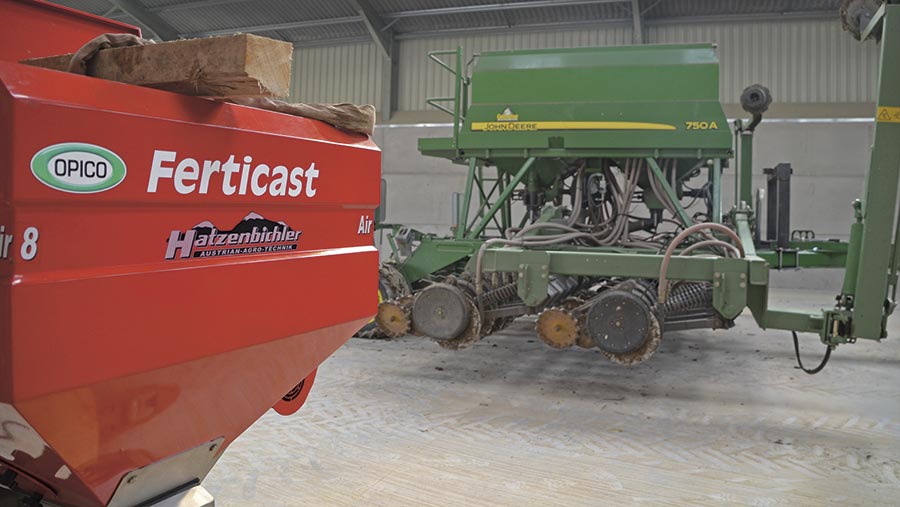
© Nick Fone
An ex-demonstrator Opico Hatzenbichler Ferticast applicator was sourced for £4,200. It differs from the standard model, having a stainless steel hopper bottom to protect against corrosion.
The current version now has a plastic tank, upgraded fertiliser-proof paintwork and a list price of £7,476.
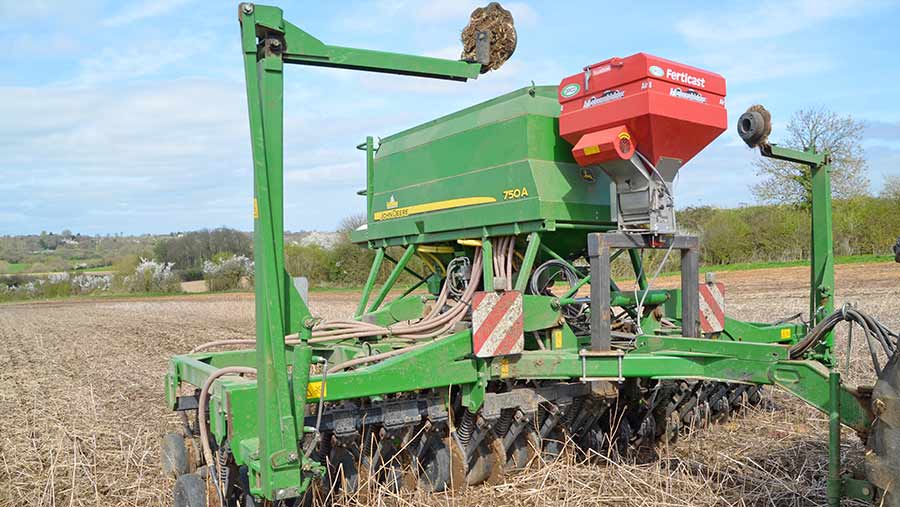
© Nick Fone
Made from 100x100mm box-section, a farm-fabricated frame mounted on the diagonal drawbar braces the Ferticast applicator. In work the tramline markers flank the tank, but care needs to be taken when folding them in for transport.

© Nick Fone
Grids positioned in the drill hopper mean it’s possible to safely access the granular applicator for filling.
Available in 10kg bags, phosphate-rich Umostart seed-bed fertiliser goes on at a rate of about 15kg/ha to provide direct-drilled crops with supplementary nutrition in the early stages of development.
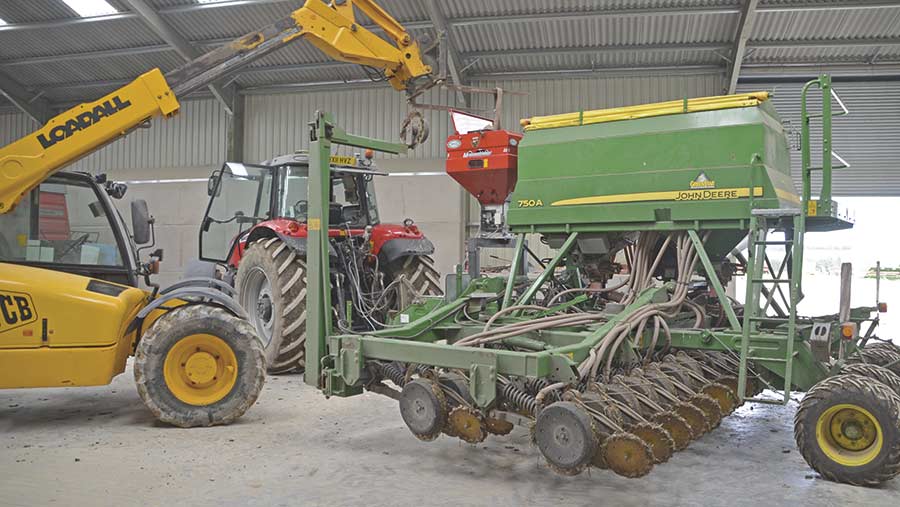
© Nick Fone
The Ferticast unit is lowered in to position. Mounted up high over the drawbar, it means the delivery tubes do not run uphill to the point where they enter the airstream.
Also, the operator still has uninterrupted views of the drill’s working parts.

© Nick Fone
A relatively simple build, the hopper mounting frame was put together in the farm workshop using 100x100mm box-section.
Overlapping end plates provide extra rigidity. It was intentionally overengineered to reduce the chance of the applicator experiencing potentially damaging vibrations.
U-bolts secure the hopper to the frame while home-made clamps with M20 bolts hold the frame to the drill’s diagonal drawbar braces.
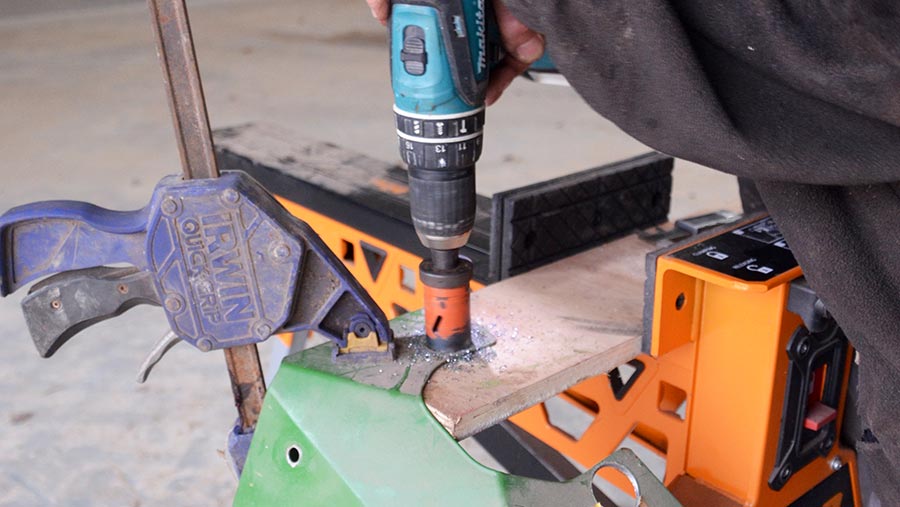
© Nick Fone
A hole-saw was used to cut openings through the venturi covers to accommodate the fertiliser delivery tube.

© Nick Fone
Tucked in alongside the two venturi cones, the pipes allow fertiliser to join the airflow at the same point where the metered seed is introduced.
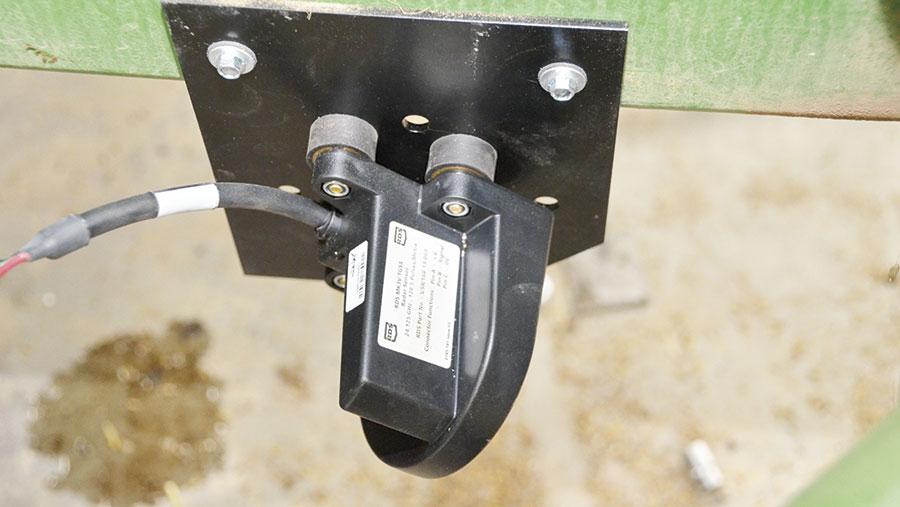
© Nick Fone
Part of the Ferticast fitting kit, an RDS radar sensor provides a speed input for the applicator’s electronic metering unit. Again it is bolted to the drill frame using “Tek” screws.

© Nick Fone
Secured to the cross-member that carries the transport wheel stub axles with “Tek” screws, the cut-out switch is triggered as the metering wheel lifts in and out of work.
The bolt clamping the various hydraulic hoses and electrical wires was simply replaced with a longer one with a backing nut to provide clearance for the switch’s spring trigger.
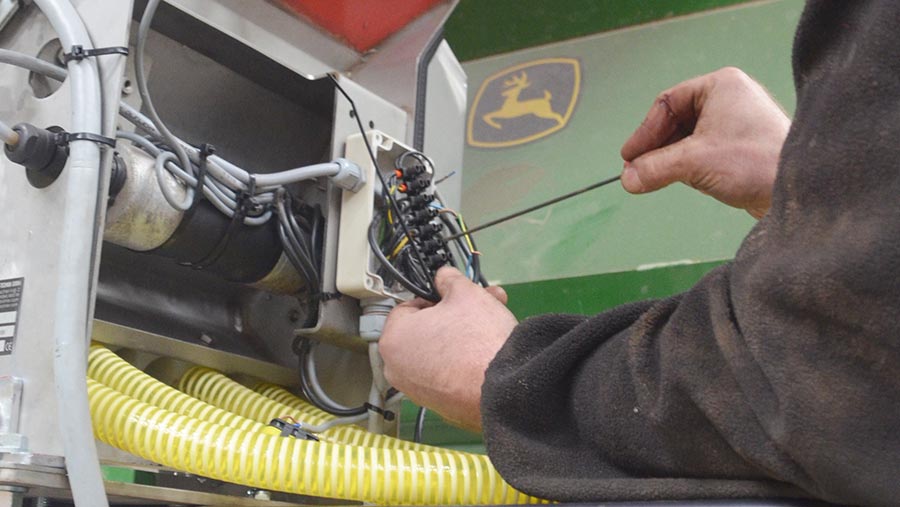
© Nick Fone
Wiring the applicator in was a relatively straightforward task, connecting the speed sensor and cut-out switch feeds.
To ensure a reliable 12V power supply, the pre-wired control box is connected directly to the tractor battery with a 20amp fuse via a three-pin plug.

© Nick Fone
The Hatzenbichler control box sorts out application rates and the calibration procedure – a straightforward task.

© Nick Fone
Agronomist Peter Lowth (left) advised Wilshire grower Ian Warman to try specialist seed-bed fertliser Umostart to give his direct-drilled crops an early kick. So far results look promising.

© Nick Fone
With the Ferticast applicator mounted high over the drawbar, views to the coulters aren’t significantly compromised.
As well as low-rate seed-bed fertilisers, the unit can be used to sow a small-seed cover or companion crop alongside another larger grained species from the main drill tank.

